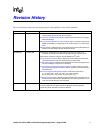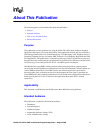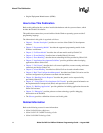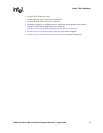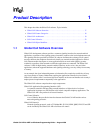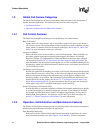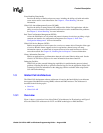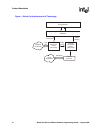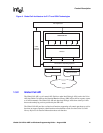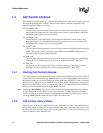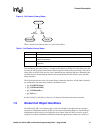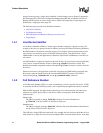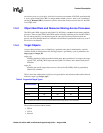
18 Global Call API for HMP on Windows Programming Guide — August 2006
Product Description
1.2 Global Call Feature Categories
The Global Call development software provides many features allowing for the development of
flexible and robust applications. The features fall into one of two main categories:
• Call Control Features
• Operation, Administration and Maintenance Features
1.2.1 Call Control Features
The Global Call development software provides the following call control features:
Basic Call Control
Includes basic call control features such as, the ability to make a call, detect a call, answer a
call, release a call, etc. The implementation of these capabilities is based on the basic call state
model, which is a common model for all network technologies. See Section 3.2, “Basic Call
Model” for more information on the basic call model.
Advanced Call Model
Defines the behavior for advanced features, such as hold and transfer. These capabilities are
provided to support technologies and protocols that support such features, for example,
Supervised Transfer. The implementation of these capabilities is based on a more advanced
call state model. See Section 3.5, “Advanced Call Control with Call Hold and Transfer” for
more information. The advanced call model applies only to E1/T1 and ISDN technologies, not
IP technology, which uses a different scheme for features such as call transfer. See the Global
Call IP Technology Guide.
Call Progress and Call Analysis
Provides the capabilities for handling pre-connect (Call Progress) information that reports the
status of the call connection, such as, busy, no dial tone or no ringback, and post connect (Call
Analysis) information that reports the destination party’s media type, for example, voice,
answering machine, or fax modem. This information is determined by the detection of tones
defined specifically for this purpose. See Section 7.2, “Call Progress Analysis when Using
Digital Network Interface Boards” for more information. The call progress and call analysis
feature applies only to E1/T1 and ISDN technologies, not IP technology.
Feature Transparency and Extension (FTE)
Provides the ability to extend the capabilities of Global Call to handle features that are specific
to a particular technology so that those features are accessible via the Global Call interface.
For example, for ISDN applications, Global Call supports supplementary services such as
Overlap Send, Overlap Receive, Any Message, Any IE, and User-to-User messaging. See
Section 7.4, “Feature Transparency and Extension” for more information.
1.2.2 Operation, Administration and Maintenance Features
The Global Call development software provides the following features that facilitate the operation,
administration and maintenance of Global Call applications:
Error Handling Functionality
When an error occurs, Global Call provides functions that enable an application to retrieve
more information about the error. See Chapter 6, “Error Handling” for more information.




